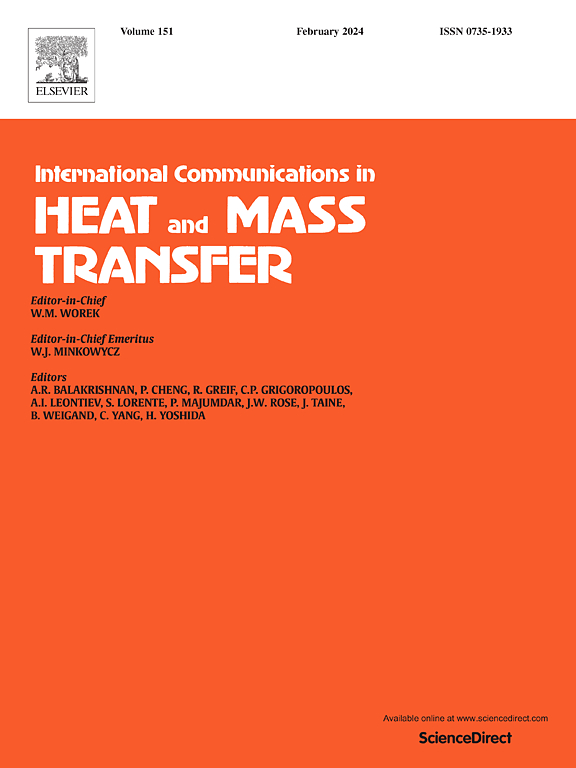基于多策略改进沙猫群优化算法的拱坝热参数反演
IF 6.4
2区 工程技术
Q1 MECHANICS
International Communications in Heat and Mass Transfer
Pub Date : 2025-08-21
DOI:10.1016/j.icheatmasstransfer.2025.109502
引用次数: 0
摘要
混凝土温度场的模拟精度受到热参数的限制,在实际施工中,由于环境温度波动、冷却水变化、太阳辐射和表面保温等因素,混凝土温度场的模拟精度往往与实际值存在较大差异。传统的反演方法容易陷入局部最优,收敛效率较低;难以满足高维非线性优化的要求。为此,本文提出一种改进的多策略沙猫群优化算法(MISCSO)。种群初始化采用三次混沌图增强随机性,融合三角行走机制、Levy飞行、透镜成像逆向学习策略,平衡全局探索和局部开发能力。通过12个基准函数测试和非参数测试验证了MISCSO的性能优势。通过Sobol全局敏感性分析筛选关键热参数。通过工程算例,建立了考虑环境温度、边界条件和冷却水的有限元模型,并利用优化算法得到了热工参数。将反演参数值代入数值模型后,计算温度与实测值的绝对误差在1.0℃以内,验证了反演方法的有效性。本文章由计算机程序翻译,如有差异,请以英文原文为准。
Inversion of thermal parameters of arch dam based on multi-strategy improved sand cat swarm optimization algorithm
The simulation accuracy of concrete temperature fields is limited by thermal parameters, which often differ significantly from real values due to environmental temperature fluctuations, cooling water variation, solar radiation, and surface insulation in actual construction. Traditional inversion methods may fall into a local optimum and have low convergence efficiency; it is difficult to meet the requirements of high-dimensional nonlinear optimization. Therefore, this paper proposes a Multi-Strategy Improved Sand Cat Swarm Optimization algorithm (MISCSO). The population is initialized using a cubic chaotic map to enhance randomness, and the triangle walk mechanism, Levy flight, and lens imaging reverse learning strategy are integrated to balance the global exploration and local development capabilities. The advantages of MISCSO performance are verified by twelve benchmark function tests and nonparametric tests. Key thermal parameters were screened by Sobol global sensitivity analysis. A finite element model considering the ambient temperature, boundary conditions, and cooling water was built through an engineering example, and the thermal parameters were obtained by using the optimization algorithm. After substituting the inversion parameter value into the numerical model, the absolute error between the calculated temperature and the monitored value is within 1.0 °C, which verifies the effectiveness of the inversion method.
求助全文
通过发布文献求助,成功后即可免费获取论文全文。
去求助
来源期刊
CiteScore
11.00
自引率
10.00%
发文量
648
审稿时长
32 days
期刊介绍:
International Communications in Heat and Mass Transfer serves as a world forum for the rapid dissemination of new ideas, new measurement techniques, preliminary findings of ongoing investigations, discussions, and criticisms in the field of heat and mass transfer. Two types of manuscript will be considered for publication: communications (short reports of new work or discussions of work which has already been published) and summaries (abstracts of reports, theses or manuscripts which are too long for publication in full). Together with its companion publication, International Journal of Heat and Mass Transfer, with which it shares the same Board of Editors, this journal is read by research workers and engineers throughout the world.

 求助内容:
求助内容: 应助结果提醒方式:
应助结果提醒方式:


